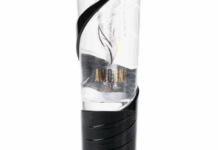PEM compared to Method Acting differences: a safer, body-based way to reach intense emotion without burning out your mind.
Imagine giving the performance of your life on a film set or on a tiny black box stage, then walking out, grabbing late-night ramen, and actually feeling okay.
Not shattered.
Not numb.
Just… human.
That’s the emotional promise sitting inside the PEM vs Method Acting difference. For generations, we’ve worshipped Stanislavski, Strasberg, Meisner, Adler, Hagen. We chase their lineages through acting classes, acting schools, studios. These methods helped build modern screen and stage work—but they often lean on memory, psyche, and sometimes trauma.
PEM, the Perdekamp Emotional Method, plays in the same league as those giants—yet takes a different, more body-based path. It treats emotion as something you can train mechanically and safely, so, as Sarah Victoria says, “that everyone knows you can be emotionally intense and safe at the same time.” For actors, directors, and even curious non-actors, that’s where craft and emotional health finally start to line up.
“that everyone knows you can be emotionally intense and safe at the same time.”
Sarah Victoria
PEM master instructor
Old-School Gurus vs a New Emotional Body Hack
If you’ve ever sat in a Juilliard acting class, a Strasberg studio, or a Meisner intensive in Chelsea, you know the vibe:
-
“Use your memories.”
-
“Dig into your pain.”
-
“Stay in the role all day.”
Stanislavski planted the seed. Strasberg dialed it into the “Method.” Meisner chased truthful behavior. Stella Adler leaned toward imagination. Each acting school has its own flavor, its own mythology, its own stories of genius and breakdown.
The PEM vs Method Acting difference is that PEM doesn’t ask your mind to believe it’s in danger. It goes underneath the psyche and straight into the nervous system.
Founder Stephan Perdekamp mapped physical “access points” in the body that trigger full emotional movement patterns—fear, grief, lust, aggression—without telling your brain you’re actually on a sinking ship.
That means:
-
The body runs fear or grief like choreography.
-
The mind stays in the acting class, on the soundstage, on the line.
-
You can turn the emotion off and on again, like a well-built camera rig, not a landmine.
PEM isn’t anti-Stanislavski or anti-Method; it’s just the next-generation hardware upgrade in a world where actors now expect emotional safety, relatability, and a sane schedule.
How the PEM vs Method Acting Difference Shows Up in Acting Class
Picture a typical Method heavy shoot:
-
An actor has to cry all day Friday.
-
The scene gets pushed.
-
They spend the whole weekend holding themselves in that thin, cracked state so they can “still get there” on Monday.
Sarah tells a real version of that story and remembers how drained the actor was afterward. PEM gives a very different experience. She talks about discovering, “I can access emotions and I don’t have to traumatize myself.”
In a PEM class—whether it’s at a drama university, a private workshop, or a pop-up visit, you’ll see things like:
-
Fear runs on a baseball field: actors trigger fear in the body, run full-out, then release it. Mind clear. Batteries recharged.
-
A cutting scene on stage where the audience sobs, but the actor steps off, resets, and prepares for the next moment without emotional hangover.
-
Students learning to separate grief from aggression, then layer them. Fear underneath, aggression on top, then grief cutting in like a key change in a song.
PEM is technical, but not cold. Directors still get intense, flavorful performances. Casts stay fun-loving, with a sense of humor that survives long days and night shoots. It quietly becomes the healthiest option sitting next to all the familiar names on your “acting methods I should know” list.
Why PEM Feels Healthier Than Living in Your Trauma
Classical Method culture says: stay in character, stay in the wound, stay in the storm.
PEM says: let’s train the storm like an athlete trains sprints.
Perdekamp is blunt about burnout. He describes stress as a jammed fight-flight system: fear wants to run; aggression wants to push; both patterns pull on the same muscles and nothing resolves. Over time, the subconscious learns that going to work—or going to set—means depletion. That’s when getting out of bed in your Berlin flat feels like hauling another body.
PEM teaches people to:
-
Activate aggression cleanly, then switch it off.
-
Activate fear cleanly, then switch it off.
-
Release old, stuck emotional patterns so the system can reset.
“So it’s a much, much less expensive way for the actor to invest their life force into work.”
That applies whether you’re at an A-list acting school, a regional theater program, or a tiny scene study class over a café in a small town. The technique respects your nervous system. It respects the fact that you might want to go home, cook something, laugh with your partner, and still have energy left to be your fun-loving self the next day.
As Perdekamp puts it, “The actor doesn’t have to sacrifice their health in order to give insights to the audience.” That’s a quiet revolution in an industry that still romanticizes the wrecked, half-broken genius.
“The actor doesn’t have to sacrifice their health in order to give insights to the audience.”
Stephan Perdekamp
For a wider context on traditional Method acting and its history, you can also skim this Encyclopaedia Britannica overview of Method acting.
From Tortured Artist to Athlete of Emotion
In every big city—L.A., NYC, London, Chicago—you’ll hear the same whispered myth: if you’re not wrecked, you’re not real. Juilliard stories, Strasberg stories, the “I suffered, therefore it’s art” stories.
PEM quietly undercuts that with a different identity: the athlete of emotion.
Instead of hoarding a few “real” breakdowns, PEM actors build a repeatable system. They:
-
Train the six basic emotions as clear physical patterns.
-
Separate mixed-up habits (like grief always leaking into anger).
-
Practice turning emotions up and down on cue while the mind stays clear.
It’s like going from learning three guitar chords by pain and chance to having full scales, modes, and technique. Still emotional. Still soulful. Just… sustainable.
For directors and producers—from Netflix in L.A. to art-house teams in Berlin—that makes casting easier. A PEM-trained actor can hit a precise emotional flavor on line three, shift into a different one on line seven, and keep that sense of humor alive between takes. The performance stays wild; the process stays sane.
And if you’re not an actor at all?
PEM’s body-based emotional work is already being used in health prevention programs, with people in addiction treatment, and in collaboration with psychologists and therapists. It’s oddly comforting to know the same toolbox that fuels awards-level acting can also make ordinary life more relatable and less exhausting.
For a deeper dive into programs, classes, and intensives, start at the official PEM site.
FAQ: PEM vs Method Acting Difference
Q: Does PEM replace Stanislavski, Strasberg, Meisner, and all the classics?
A: No. Think of PEM as the latest branch on the same family tree. Stanislavski opened the door, Strasberg and Meisner pushed psychology and behavior. PEM adds a deeply physical, nervous system approach that’s easier on your health and more repeatable on set.
Q: Will PEM make my acting look mechanical or fake?
A: Quite the opposite. Because PEM works with natural movement patterns already wired into the body, the result feels spontaneous, intense, and alive. The technique holds the structure so your choices can stay playful, flavorful, and fun-loving instead of forced.
Q: Can PEM help if I’m not an actor but struggle with stress or burnout?
A: Yes. The same tools that help actors avoid emotional burnout can help anyone unwinding jammed fight–flight patterns. PEM doesn’t replace therapy, but it gives you practical, body-based ways to release tension and reset your energy.
Choosing a Method That Loves You Back
In the real world of auditions, production shoots, festivals, and theater nights, the PEM vs Method Acting difference comes down to this: Method often asks you to live the hurricane; PEM trains you to run it—and step out of it when the director yells “cut.”
You can still chase bold work, complex characters, and performances with real emotional flavor. You can still be that fun-loving, deeply committed artist. You just don’t have to leave pieces of yourself scattered across every set and acting school you pass through.
If that sounds like a healthier future for your craft, it might be time to put PEM next to your favorite teachers on the shelf—and see what happens when emotional genius and nervous-system care finally share the same script.
PEM compared to Method Acting difference: a safer, body-based way to reach intense emotion without burning out your mind.

















![Get Your Indie Movie Made (Responsibly): Jeff Caruso of Wrapbook Leads the AFM 2025 Film Finance Conversation [Exclusive Interview] American Film Market](https://dailyovation.com/wp-content/uploads/2025/11/AmericanFilmMarket2025-1-218x150.jpg)















If PEM can keep me from crying in my trailer between takes, I’m in. My therapist also says hi
anything that stops actors from going full ‘Method meltdown’ on day three is a tax write-off in my heart
Stanislavski walked so PEM could run.
If Method Acting is whiskey neat, PEM is a well-balanced martini
PEM sounds like CrossFit for feelings. But like… the non-annoying version
Actors: I can cry in 4 seconds. Me: I cry whenever my DoorDash is late